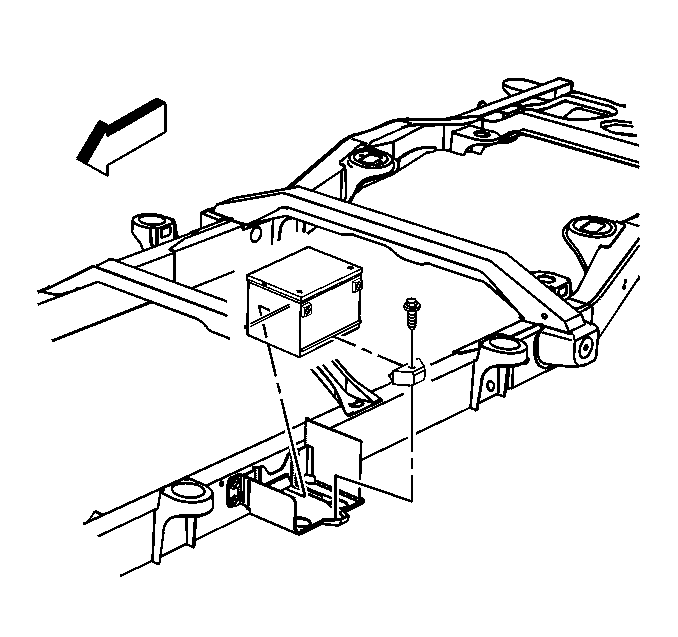Removal Procedure
Caution: Batteries produce explosive gases, contain corrosive acid, and supply levels
of electrical current high enough to cause burns. Therefore, to reduce the risk of
personal injury when working near a battery:
• Always shield your eyes and avoid leaning over the battery whenever possible. • Do not expose the battery to open flames or sparks. • Do not allow the battery electrolyte to contact the eyes or the skin.
Flush immediately and thoroughly any contacted areas with water and get medical help. • Follow each step of the jump starting procedure in order. • Treat both the booster and the discharged batteries carefully when using
the jumper cables.
Caution: Batteries produce explosive gases. Batteries contain corrosive acid.
Batteries supply levels of electrical current high enough to cause burns.
Therefore, in order to reduce the risk of personal injury while working
near a battery, observe the following guidelines:
• Always shield your eyes. • Avoid leaning over the battery whenever possible. • Do not expose the battery to open flames or sparks. • Do not allow battery acid to contact the eyes or the skin. - Flush any contacted areas with water immediately and thoroughly. - Get medical help.
- Disconnect the battery negative cable from the negative battery terminal. Refer to Battery Negative Cable Disconnection and Connection .
- Raise the vehicle. Refer to Lifting and Jacking the Vehicle in General Information.
- Disconnect the auxiliary battery positive and negative cables from the battery terminal. Refer to Auxiliary Battery Positive Cable Replacement and Auxiliary Battery Negative Cable Replacement .
- Remove the battery hold down retaining bolt.
- Remove the battery from the tray.

Installation Procedure
- Install the battery into the battery tray.
- Install the battery hold-down retainer and bolt.
- Install the rear battery tray to the vehicle.
- Connect the battery positive and negative cables to the battery. Refer to Auxiliary Battery Positive Cable Replacement and Auxiliary Battery Negative Cable Replacement .
- Lower the vehicle.
- Connect the battery negative cable to the battery. Refer to Battery Negative Cable Disconnection and Connection .

Notice: Use the correct fastener in the correct location. Replacement fasteners must be the correct part number for that application. Fasteners requiring replacement or fasteners requiring the use of thread locking compound or sealant are identified in the service procedure. Do not use paints, lubricants, or corrosion inhibitors on fasteners or fastener joint surfaces unless specified. These coatings affect fastener torque and joint clamping force and may damage the fastener. Use the correct tightening sequence and specifications when installing fasteners in order to avoid damage to parts and systems.
Tighten
Tighten the battery hold-down retainer bolt to 25 N·m (18 lb ft).
